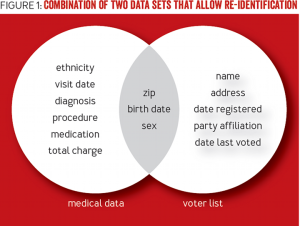Blogs and Writings We Like
This week we highlight 3 fine writers discussing timely subjects in media tech law: Beverly Berman writing about website terms of service and fair use, Leonard Gordon writing about “astroturfing” in advertising law, and John Buchanan and Dustin Cho writing about a gaping coverage gap with cybersecurity insurance.
Hot Topic: Fake News
Beverly Berneman’s timely post, “Hot Topic: Fake News” blog post (on the “IP News For Business” blog of Chicago firm Golan Christie Taglia), offers a simple cautionary tale about publishing your copyrighted artwork on the internet, or in this case publishing on a website (DeviantArt) promoting the works of visual artists. One such artist’s posting subsequently appeared for sale, unauthorized, on t-shirts promoted on the website of another company (Hot Topic). The aggrieved artist then sought recourse from DeviantArt. Berneman (like DeviantArt) pointed to DeviantArt’s terms of use, which prohibited downloading or using artwork for commercial purposes without permission from the copyright owner – leaving the artist with no claim against DeviantArt.
Berneman correctly highlights the need to read website terms of use before publishing your artwork on third party sites, especially if you expect that website to enforce piracy by other parties. Berneman also dismisses arguments about fair use made by some commentators about this case, adding “If Hot Topic used the fan art without the artist’s permission and for commercial purposes, it was not fair use.”
What we like: We like Berneman’s concise and spot-on guidance about the need to read website terms of use and, of course, when fair use is not “fair”. Plus her witty tie-in to “fake news”.
* * *
NY AG Keeps up the Pressure on Astroturfing
Leonard Gordon, writing in Venable’s “All About Advertising Law” blog, offered a nice write-up of several recent settlements of “Astroturfing” enforcement actions by New York State’s Attorney General. First, what is Astroturfing? Gordon defines it as “the posting of fake reviews”, although blogger Sharyl Attkisson put it more vividly: “What’s most successful when it appears to be something it’s not? Astroturf. As in fake grassroots.” (And for the partisan spin on this, Attkisson follows that up with her personal conclusions as to who makes up the “Top 10 Astroturfers”, including “Moms Demand Action for Gun Sense in America and Everytown” and The Huffington Post. Ok now. But we digress ….)
The first case involved an urgent care provider (Medrite), which evidently contracted with freelancers and firms to write favorable reviews on sites like Yelp and Google Plus. Reviewers were not required to have been actual urgent care patients, nor were they required to disclose that they were compensated for their reviews.
The second case involved a car service (Carmel). The AG claimed that Carmel solicited favorable Yelp reviews from customers in exchange for discount cards on future use of the service. As with Medrite, reviewers were not required to disclose compensation for favorable reviews, and customers posting negative reviews were not given discount cards.
The settlements both involved monetary penalties and commitments against compensating reviewers without requiring the reviewers to disclose compensation. And in the Carmel settlement, Carmel took on affirmative obligations to educate its industry against conducting these practices.
What we like: We like Gordon’s commentary about this case, particularly its advisory conclusion: “Failure to do that could cause you to end up with a nasty case of “turf toe” from the FTC or an AG.” Very nice.
* * *
Insurance Coverage Issues for Cyber-Physical Risks
John Buchanan and Dustin Cho write in Covington’s Inside Privacy blog about a gaping insurance coverage gap from risks to physical property from cybersecurity attacks, as opposed to the more familiar privacy breaches. Buchanan and Cho report on a recently published report from the U.S. Government’s National Institute of Standards and Technology (NIST), helpfully titled “Systems Security Engineering Considerations for a Multidisciplinary Approach in the Engineering of Trustworthy Secure Systems”. Rolls off the tongue.
The NIST report is a dense read (257 pages), and covers much more than insurance issues, in particular recommendations for improvements to system security engineering for (among other things) critical infrastructure, medical devices and hospital equipment and networked home devices (IoT or the Internet of Things).
Buchanan and Cho’s post addresses insurance issues, noting that “purchasers of cyber insurance are finding that nearly all of the available cyber insurance products expressly exclude coverage for physical bodily injury and property damage”.
What we like: Insurance is always an important and underappreciated business issue, with even less public understanding of the property and injury risks to (and coverage from) cyber damage. We like how Buchanan and Cho took the time to plow through an opaque government report to tell a simple and important story.
Read More

